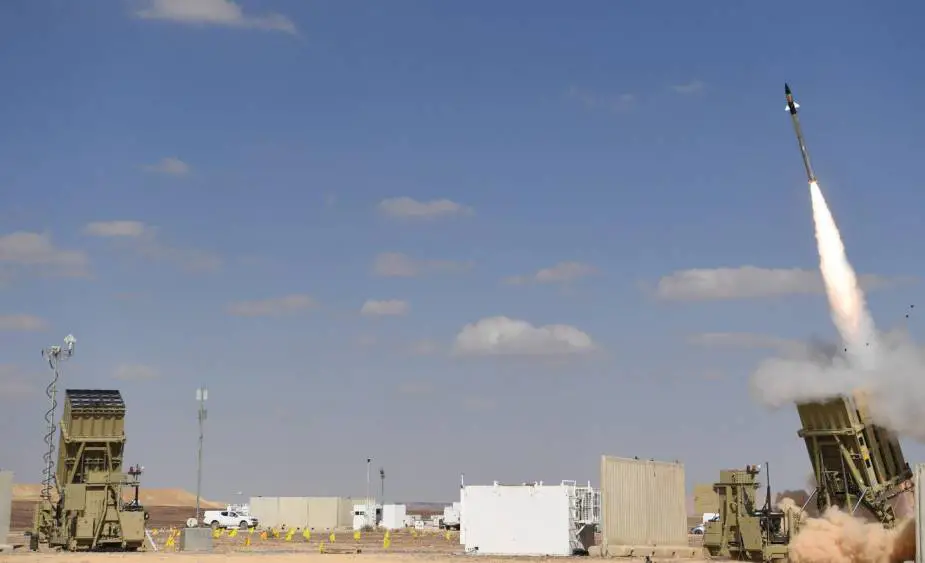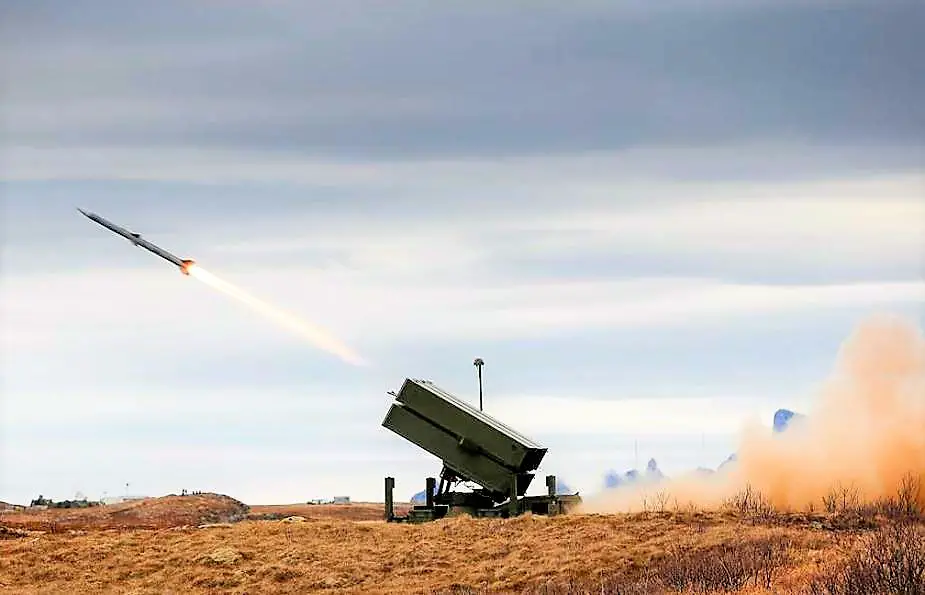On November 16, President of the Hungarian Republic Katalin Novák and Minister of Defense Kristóf Szalay-Bobrovniczky visited the Israeli Iron Dome missile defense system, Hungary Today reports. Minister Szalay-Bobrovniczky said that, among other things, they were shown the combined air defense system that Hungary should study in light of the Polish missile incident on November 15.
Follow Army Recognition on Google News at this link

Firing of a missile, part of the Iron Dome air defense system (Picture source: Israel MoD)
It is a less-known fact the Ministry of Defense has ordered an unknown quantity of the Israeli ELTA radars that are a key component of the Iron Dome air defense system, Hungary Today reports, also reporting that the rocket launchers that will be integrated with the radars will not be of Israeli design: instead, Hungary has purchased the Norwegian-US NASAMS system for this purpose, as well as the missiles themselves, i.e. the AMRAAM in the initial phase. At a later stage the European-developed, more advanced Meteor missiles could be deployed with the system, Hungary Today assumes.
In 2020, Kongsberg and Raytheon Missiles & Defense were awarded a Euro 410 million contract by Hungary for the National Advanced Surface-to-Air Missile System, also known as NASAMS. So, Hungary became the 6th NATO nation and the 12th country in the world to acquire NASAMS, a highly adaptable medium-range solution for a variety of operational air defense requirements. Selecting NASAMS and becoming part of the greater NASAMS family allows Hungary to take advantage of the active production line - ensuring rapid delivery and competitive pricing for Hungary’s armed forces. The program enables long-term industrial cooperation between Hungarian and Norwegian industries.
“With NASAMS, Hungary will employ the most modern and capable medium-range air defence system in the world. NASAMS’ modularity and open architecture enables a continuous introduction of new technology ensuring that the system can be adapted to new threats and missions throughout its lifetime. The contract is a continued success of our cooperation with Raytheon Missiles & Defense in the air defence market,” says Eirik Lie, President of Kongsberg Defence & Aerospace AS.
“Hungary joins the U.S. and four other NATO nations in entrusting its medium-range air defense needs to NASAMS proven capability,” said Tom Laliberty, vice president of Land Warfare & Air Defense at Raytheon Missiles & Defense business. “Upgrading Hungary’s layered defense capabilities not only enhances NATO commonality but maximizes the Hungarian military’s ability to quickly identify, engage and destroy current and evolving enemy aircraft, unmanned aerial vehicle and emerging cruise missile threats.”
The air defense solution is comprised of Raytheon Missiles & Defense’s AMRAAM and AMRAAM-ER missiles and SentinelTM radar, and Kongsberg’s Fire Distribution Center (FDC) and canister launcher. NASAMS offers air defenders the proven effectiveness of the AMRAAM missile which is in the inventory of 39 countries. Sentinel is a proven air defense radar deployed by more than 18 countries and has been evolved to address the C-UAS threat.

NASAMS air defense system firing an AMRAAM missile (Picture source: Kongsberg)
Iron Dome is a mobile all-weather air defense system developed by Rafael Advanced Defense Systems and Israel Aerospace Industries. The system is designed to intercept and destroy short-range rockets and artillery shells fired from distances of 4 kilometers (2.5 miles) to 70 kilometers (43 miles) away. From 2011 to 2021, the United States contributed a total of US$1.6 billion to the Iron Dome defense system, with another US$1 billion approved by the US Congress in 2022.
Iron Dome was declared operational and initially deployed on 27 March 2011 near Beersheba. On 7 April 2011, the system successfully intercepted a rocket launched from Gaza for the first time. In late 2012 Israel said that it would increase the range of Iron Dome's interceptions from a maximum of 70 kilometers (43 miles) to 250 kilometers (160 miles) and make it more versatile so that it could intercept rockets coming from two directions simultaneously.















